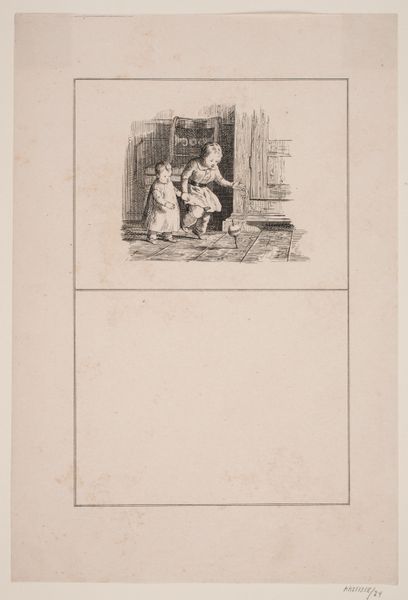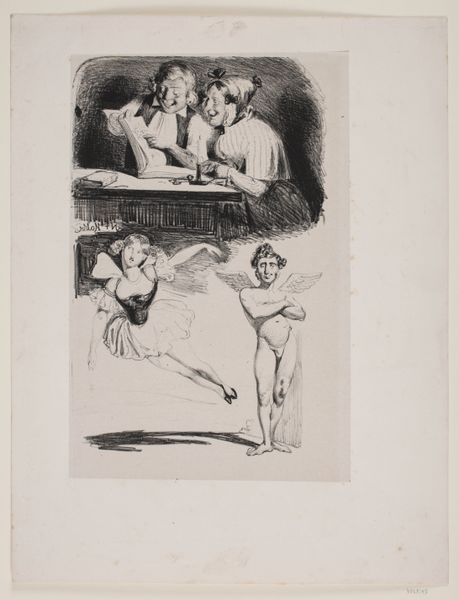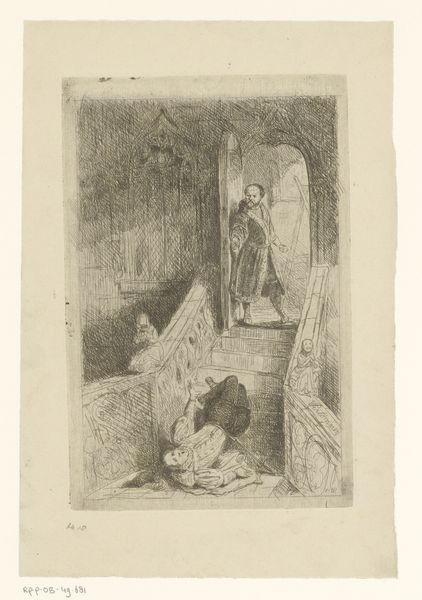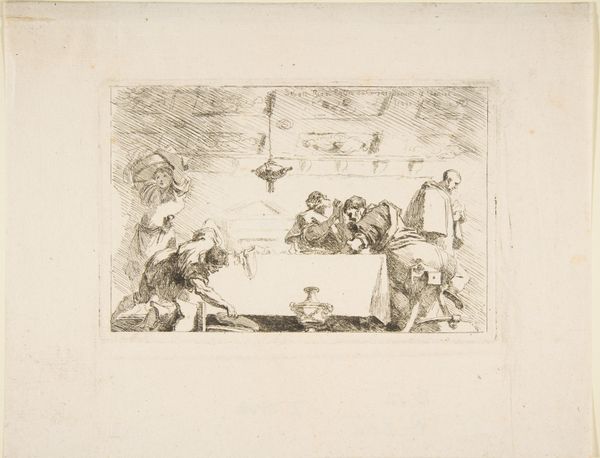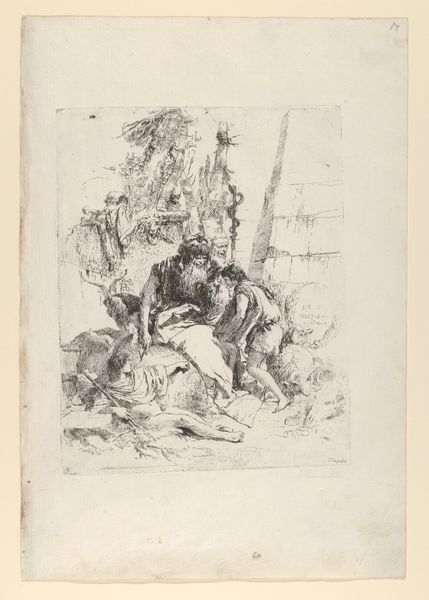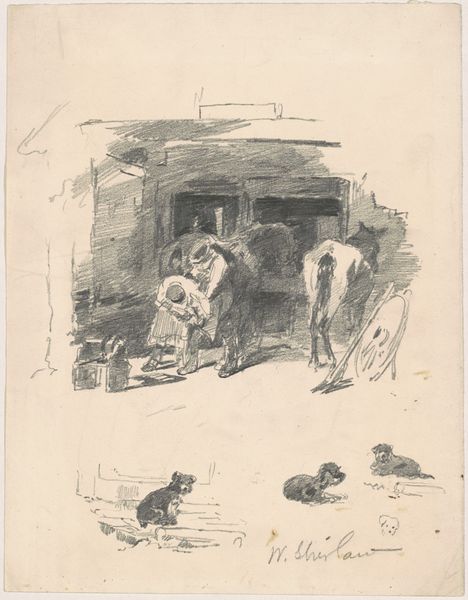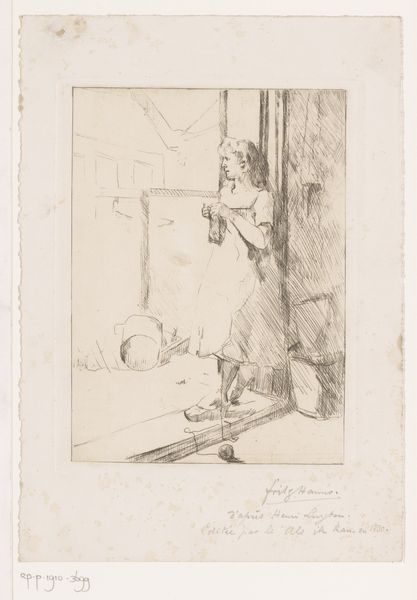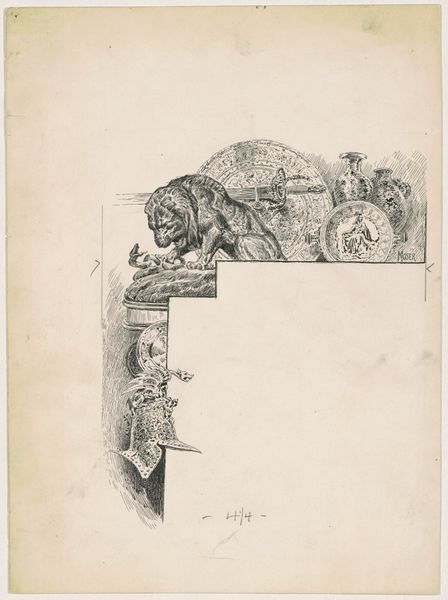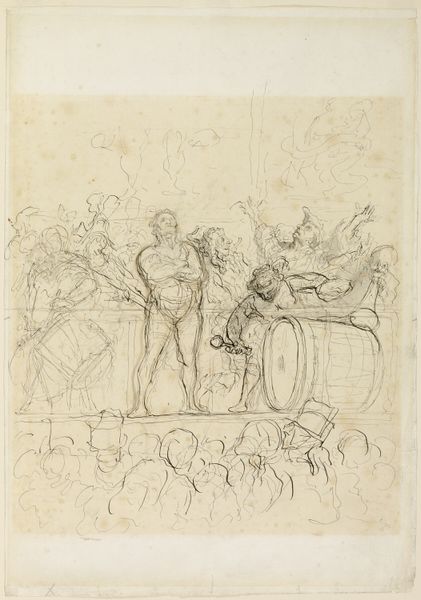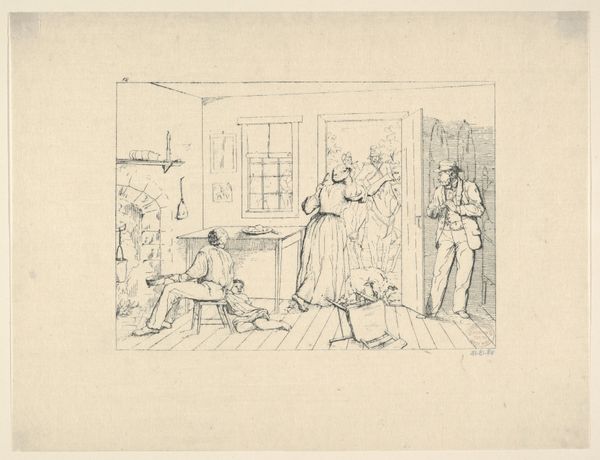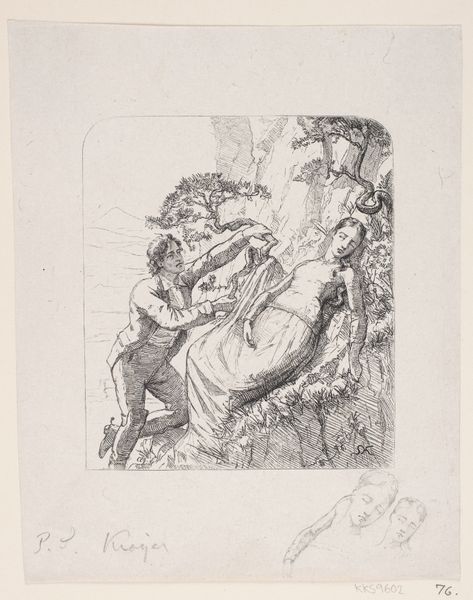
Cover design for 'Klassischer Skulpurenschatz' 1889 - 1916
0:00
0:00
drawing, print, pencil
#
drawing
#
ink drawing
# print
#
classical-realism
#
figuration
#
pencil
#
history-painting
#
academic-art
#
male-nude
Dimensions: sheet: 25 13/16 x 17 11/16 in. (65.5 x 44.9 cm)
Copyright: Public Domain
Editor: So, here we have Otto Greiner's cover design for 'Klassischer Skulpurenschatz,' made sometime between 1889 and 1916 using drawing and printmaking techniques. It looks like pencil and ink on paper. The figures feel monumental, but the sketch-like quality also makes it seem raw. What strikes you most about it? Curator: What intrigues me is the material reality embedded in this “classical” scene. Look closely at the surface of the paper itself. Consider the labor involved in producing not just the image, but the physical object, the book for which this was intended. This isn't just about idealized forms, but about the socio-economic conditions of book production at the turn of the century. Who was consuming this “treasure of classical sculpture,” and what was the material value of that consumption? Editor: I see what you mean. It's easy to get caught up in the classical aesthetic and forget about the book itself as a manufactured object, consumed by a specific audience. So the "treasure" isn't just artistic, but also material? Curator: Precisely. The reproductive process is key. How does the transition from a unique sculpture to a mass-produced image impact our understanding of classical art? Is the 'treasure' devalued, democratized, or something else entirely, through this material transformation? And think about the paper – its texture, its origin, the labor behind its manufacture… All these details provide a tangible connection to a specific historical moment. Editor: It changes the way I see it completely! I was focusing on the figures and the composition, but now I realize that the materials and the means of production are equally important to the meaning of the artwork. Curator: Indeed! By shifting our focus to the materiality, we unearth hidden narratives about labor, consumption, and the complex relationship between art and society. Editor: That’s fascinating! It gives the artwork a completely different dimension. Curator: Exactly! And hopefully encourages us to ask new questions.
Comments
No comments
Be the first to comment and join the conversation on the ultimate creative platform.

